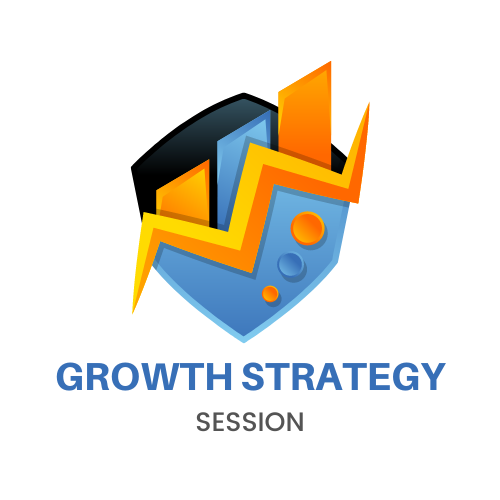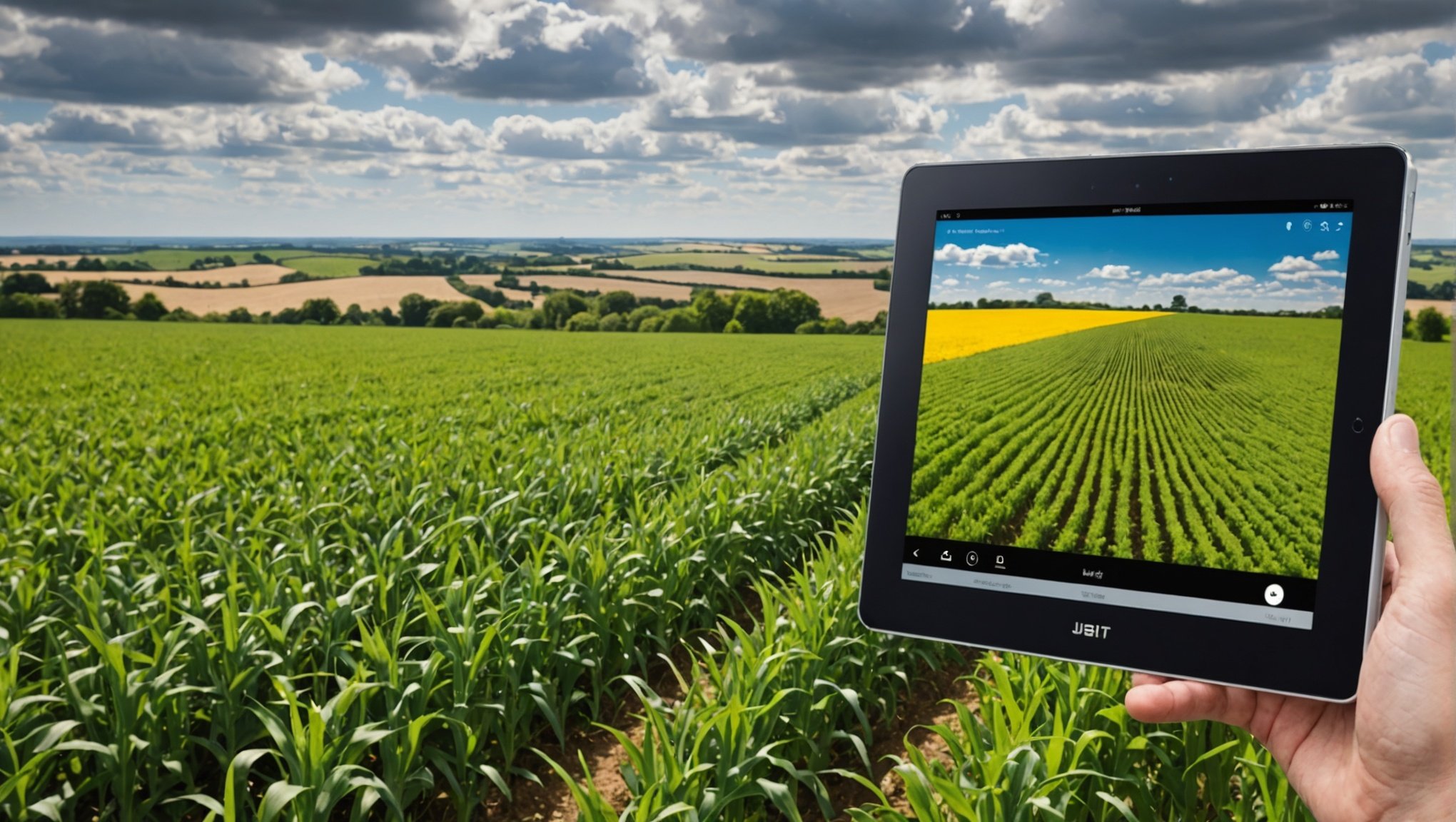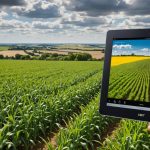Agribusiness in the UK is evolving rapidly, with IoT technology at the forefront of transformation. Enhanced crop monitoring through IoT not only increases efficiency but also optimizes resource usage and boosts yields. This innovative approach equips farmers with real-time data, enabling informed decision-making and sustainable practices. Discover how leveraging these advancements can unlock new opportunities for growth and resilience in the agricultural sector. The future of farming is indeed promising, driven by the smart integration of technology.
Overview of IoT in Agribusiness
The integration of IoT in agriculture is transforming traditional farming practices into smart farming. This technological advancement, known as precision agriculture, involves using interconnected devices to monitor and manage agricultural operations. IoT in agriculture encompasses a wide range of applications, from soil sensors to drones, enabling farmers to gather real-time data and make informed decisions.
Topic to read : Unlocking Accuracy: Leveraging Predictive Analytics in UK Insurance for Enhanced Risk Assessment
Definition and Scope
IoT in agriculture refers to the use of internet-connected devices and sensors to collect and analyse data on various farming activities. This approach allows for more efficient resource management and improved crop yields. The scope of IoT in agriculture includes monitoring soil conditions, weather patterns, and crop health, among other factors.
Importance for UK Agribusiness
For UK agribusiness, crop monitoring through IoT is crucial. It helps farmers anticipate environmental changes and optimise resource use, ensuring sustainable farming practices. By leveraging IoT technologies, UK farmers can enhance productivity and reduce waste, ultimately contributing to a more resilient agricultural sector.
Also read : Unleashing the Power of Storytelling: Elevating UK Artisanal Food Brands to Stand Out
Current Technologies
Current IoT technologies in farming include:
- Soil sensors: Measure moisture and nutrient levels.
- Drones: Provide aerial imagery for crop analysis.
- Automated irrigation systems: Adjust water supply based on real-time data.
These technologies facilitate precision agriculture, enabling farmers to maximise efficiency and minimise environmental impact.
Benefits of IoT for Crop Monitoring
The benefits of IoT in agriculture are particularly notable in the realm of crop monitoring. By leveraging IoT technologies, farmers can achieve significant improvements in crop yield and quality. This is primarily due to the enhanced data collection capabilities that IoT devices offer, allowing for more informed decision-making.
One of the primary advantages of IoT is the ability to gather real-time data on various environmental factors. This data can be used to monitor soil moisture levels, temperature, and humidity, which are crucial for optimal crop growth. With this information, farmers can make timely adjustments to their farming practices, ensuring that crops receive the necessary resources at the right time.
Moreover, IoT enables resource efficiency by optimising the use of water, fertilisers, and other inputs. Automated systems can adjust resource application based on precise data, leading to cost savings and reduced environmental impact. This efficient resource management not only lowers operational costs but also contributes to sustainable farming practices.
In summary, the integration of IoT in crop monitoring leads to increased productivity and improved crop quality, ultimately benefiting farmers and the agricultural industry as a whole.
Case Studies of Successful IoT Implementation
Exploring IoT case studies provides valuable insights into its transformative impact on UK agribusiness. Numerous farms across the UK have successfully integrated IoT solutions, showcasing significant advancements in crop monitoring and resource management.
Overview of UK Farms Using IoT Solutions
Several UK farms have embraced IoT technologies, leading to remarkable improvements in efficiency and productivity. These farms utilise interconnected devices to gather and analyse data, optimising their agricultural operations.
Specific Examples Highlighting Improvements in Crop Monitoring
One notable success story is a farm in East Anglia, which implemented soil sensors and automated irrigation systems. This integration resulted in a 20% increase in crop yield by ensuring optimal water and nutrient levels. Another example is a Scottish farm using drones for aerial imagery, allowing farmers to detect crop health issues early and take corrective actions.
Lessons Learned from Successful Implementations
These success stories highlight the importance of adopting IoT solutions tailored to specific farming needs. Key lessons include the necessity of investing in reliable technology, training staff to interpret data effectively, and continuously adapting strategies based on real-time insights. By learning from these examples, other farms can replicate these successes and enhance their own operations.
IoT Tools and Technologies for Agriculture
In the realm of agricultural technology, a variety of IoT tools are revolutionising how farmers manage their crops. These tools include advanced monitoring devices that track soil and crop health with precision. For example, soil sensors measure moisture and nutrient levels, providing critical data that helps farmers maintain optimal growing conditions.
Wireless communication technologies play a vital role in facilitating data transfer between these devices and centralised data systems. These technologies, such as LoRaWAN and NB-IoT, enable seamless connectivity across vast agricultural fields, ensuring that real-time data is readily available for analysis.
Data analytics platforms further enhance decision-making processes by interpreting the collected data. These platforms use sophisticated algorithms to generate actionable insights, allowing farmers to make informed decisions about irrigation, fertilisation, and pest control. By integrating these IoT tools, farms can achieve greater efficiency and productivity.
Key components of this technological ecosystem include:
- Sensors: For precise monitoring of environmental conditions.
- Wireless networks: To ensure reliable data communication.
- Analytics software: To transform raw data into valuable insights.
By leveraging these technologies, farmers can optimise resource use and improve crop yields, paving the way for smarter, more sustainable agriculture.
Market Trends in Agricultural IoT
The IoT market trends in agriculture are experiencing significant growth, driven by the increasing adoption of smart farming practices. Current projections indicate that the agricultural IoT market will continue to expand, with an expected compound annual growth rate (CAGR) of over 15% in the coming years. This growth is attributed to the rising demand for efficient and sustainable farming solutions that IoT technology offers.
Emerging Technologies and Innovations
Innovations in agriculture technology trends are revolutionising the sector. Key advancements include the development of autonomous machinery, such as self-driving tractors and robotic harvesters, which enhance productivity and reduce labour costs. Additionally, the integration of artificial intelligence (AI) and machine learning (ML) with IoT devices enables predictive analytics, allowing farmers to anticipate and respond to environmental changes proactively.
Consumer Demand for Smart Farming Solutions
The demand for smart farming solutions is on the rise, as consumers increasingly prioritise sustainability and transparency in food production. Farmers are seeking IoT technologies that offer real-time data insights and automation capabilities, enabling them to optimise resource use and improve crop yields. This shift in consumer preferences is driving the adoption of IoT solutions across the agricultural industry, further fuelling market growth.
Challenges in Implementing IoT Solutions
Implementing IoT solutions in agriculture presents several challenges that agribusinesses must navigate. One of the primary IoT challenges is the barriers to adoption that stem from the high initial investment costs. Many farms, especially smaller ones, struggle to afford the necessary technology and infrastructure upgrades.
Another significant obstacle is the concern over data privacy and security. As IoT devices collect vast amounts of data, ensuring the protection of sensitive information is paramount. Farmers worry about potential breaches that could compromise their competitive advantage or lead to misuse of their data.
The lack of infrastructure and technical expertise further complicates the adoption of IoT technologies. Rural areas often suffer from inadequate internet connectivity, hindering the seamless operation of IoT systems. Additionally, there is a shortage of skilled personnel who can manage and maintain these advanced technologies, posing a barrier to effective implementation.
To overcome these agricultural technology issues, it is crucial for stakeholders to invest in building robust infrastructure and provide training programs to equip farmers with the necessary skills. Addressing these challenges will pave the way for successful IoT integration in the agricultural sector.
Data Analytics and Its Role in Crop Monitoring
In the realm of precision farming, the significance of data analytics cannot be overstated. By interpreting IoT data, farmers can make informed decisions that enhance crop monitoring and management. This process involves analysing vast amounts of data collected from various sensors, such as soil moisture levels and weather patterns, to optimise farming practices.
Importance of Data Analytics in Interpreting IoT Data
Data analytics plays a crucial role in transforming raw IoT data into actionable insights. This enables farmers to predict crop health and yield, thereby improving productivity. By understanding data trends, farmers can anticipate potential issues and address them proactively.
Tools and Software Used for Agricultural Data Analysis
Several tools and software are pivotal in agricultural data analysis. Platforms like FarmLogs and Climate FieldView utilise advanced algorithms to process data and provide comprehensive reports. These tools assist farmers in visualising data, making it easier to implement changes in farming strategies.
Case Examples of Data-Driven Decision-Making in Farming
A notable example is a farm in Yorkshire that used precision farming techniques to reduce water usage by 30%. By leveraging IoT data analysis, the farm optimised irrigation schedules, demonstrating the power of data-driven decision-making in agriculture.
Future Developments in IoT for Agriculture
As we look to the future of IoT in agriculture, several exciting developments are on the horizon. These advancements promise to further revolutionise smart agriculture and enhance productivity.
Predictions for IoT Advancements in Crop Monitoring
The future of IoT will see more sophisticated sensors and devices, providing even more precise data for crop monitoring. These innovations will enable farmers to detect subtle changes in crop health, leading to timely interventions and improved yields.
Potential Impacts of AI and Machine Learning on Agriculture
The integration of AI and machine learning with IoT devices is set to transform agribusiness. These technologies will allow for predictive analytics, enabling farmers to anticipate weather changes, pest infestations, and other challenges. This foresight will facilitate proactive decision-making, reducing risks and optimising resource use.
Innovations on the Horizon
Innovations such as autonomous machinery and blockchain technology are expected to reshape agribusiness. Autonomous tractors and harvesters will automate labour-intensive tasks, while blockchain can enhance transparency in supply chains. These agricultural innovations will contribute to a more efficient and sustainable farming industry.
Policy and Regulatory Considerations
Navigating the landscape of agricultural policy and IoT regulations is crucial for the successful integration of IoT technologies in UK farming. Current regulations impacting IoT in agriculture focus on data privacy, security, and environmental sustainability. These regulations ensure that IoT devices operate safely and responsibly, protecting both farmers and consumers.
The government plays a pivotal role in promoting the adoption of IoT in agriculture. By establishing clear UK farming laws and providing incentives, the government encourages innovation and supports farmers in transitioning to smart farming practices. These initiatives aim to enhance productivity while ensuring compliance with environmental standards.
Supportive policies and frameworks are essential to foster IoT adoption in agriculture. There is a pressing need for comprehensive guidelines that address data management, interoperability, and infrastructure development. These policies should facilitate collaboration between stakeholders, including farmers, technology providers, and regulatory bodies, to create a conducive environment for IoT innovation.
By addressing these regulatory considerations, the UK can leverage IoT technologies to boost agricultural efficiency and sustainability, ultimately benefiting the entire agribusiness sector.
Conclusion and Call to Action for Agribusinesses
Adopting IoT solutions is no longer a luxury but a necessity for modern agribusinesses aiming to achieve future readiness. As the agricultural landscape evolves, the integration of IoT technologies should be a central component of any agribusiness strategy. This proactive approach not only enhances efficiency but also ensures competitiveness in an increasingly tech-driven market.
Staying informed about technological advancements is crucial. Agribusinesses must keep abreast of the latest developments in IoT to leverage these innovations effectively. This knowledge empowers businesses to make strategic decisions that optimise resource use and improve productivity.
Collaboration and knowledge sharing within the sector present significant opportunities. By engaging with peers and industry experts, agribusinesses can exchange insights and experiences, fostering a community of innovation. This collective effort can accelerate IoT adoption and drive the sector towards sustainable practices.
In conclusion, embracing IoT adoption is a strategic move that aligns with the future of agribusiness. By prioritising this integration, businesses can position themselves at the forefront of agricultural innovation, ensuring long-term success and sustainability.














